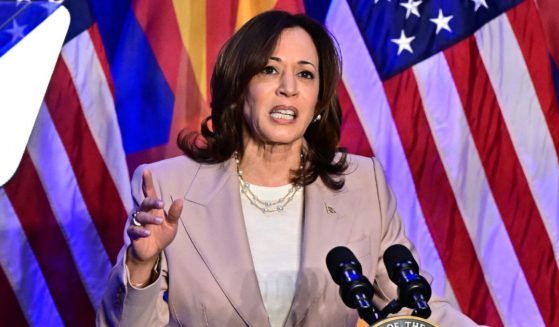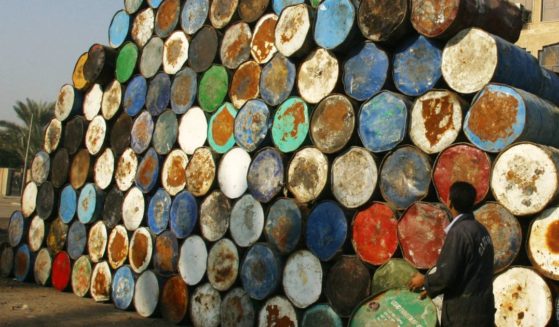As China and India Come to Blows in the Himalayas, Can America Provide Aid?
Sitting next to one of Earth’s largest mountain ranges are the two most populous countries on the planet. And over the past few years, the formerly warm relations between New Delhi and Beijing have turned frosty.
Of the many reasons fueling the heightened tensions, one can be attributed to growing pains. Beijing’s formidable rise in international rank applies pressure to its neighboring country, which challenges its own attempt to levy regional authority.
As both nations have progressed and matured, the two sides now acknowledge that no mutual agreement can sufficiently account for or protect what is in their nations’ best interests.
At the epicenter of the Sino-Indian feud is a disputed territory over which the Chinese government claims control. According to the Council on Foreign Relations, Beijing and New Delhi both claim independent control of the landmass.
In a standoff last year, thousands of Chinese and Indian soldiers occupied the Ladakh region of the high Himalayas, resulting in the worst Sino-Indian border dispute in over four decades.
Armed with only sticks and rocks, the two sides clashed, ending with at least 20 Indian soldiers deceased and 76 wounded. Casualties on the Chinese side remain unknown, according to the South China Morning Post.
Subsequent to the clash, the Indian Navy deployed a warship to the South China Sea and banned 59 Chinese web applications, such as TikTok and WeChat, from India’s domestic market. Indian officials also installed barriers to restrict the flow of Chinese investment into India’s improving infrastructure network, according to the CFR.
As New Delhi’s soft offensive ebbed, Beijing retaliated with a deliberate cyberattack on Mumbai’s electrical grid in October 2020, resulting in a brief electrical blackout for India’s most populous city.
According to The Diplomat, the two sides have started building extensive infrastructure projects in the contested border region, with the goal of improving each respective nation’s internal connectivity and military mobilization.
In any conflict between two nuclear powers, there is great risk for the entire world. And the geopolitical implications of China’s recent rise to prominence only compound the complexity of the relationship.
Because Chinese material and ideological superiority is perceived by the Indian government as a national security threat, the nation has drifted much closer to Washington and its set of allies, prompting Chinese President Xi Jinping to extend Beijing’s strategic influence.
Chinese State Councilor and Foreign Minister Wang Yi planned to lead the fourth China-Afghanistan-Pakistan Trilateral Foreign Ministers’ Dialogue this week. Since 2017, the three parties have met “to enhance mutual trust and promote cooperation,” Wang Wenbin, a Communist Party spokesman, told Chinese state-run media.
This year’s meeting carried with it more significance, nonetheless, as it coincided with the formal withdrawal of active duty United States and North Atlantic Treaty Organization troops from Afghanistan.
In addition to China’s Belt and Road Initiative, the China-Pakistan Economic Corridor has introduced billions of dollars of investment into Pakistan’s infrastructure and economy, facilitating bilateral trade relations between the two governments, according to the CFR.
Topically, Beijing and Islamabad would both benefit from expanding their trade and resource network into Afghanistan, which now enters a period of domestic and regional uncertainty. With this opportunity, the Beijing government can now cement stronger multilateral relations in the Middle East.
From the perspective of Washington, however, India is considered a counterweight to China’s expanding regional authority.
The United States, in addition to Australia and Japan, have joined alongside the Indian government to establish ‘The Quad’ — a foursome of countries that plan to counter China’s influence over vaccine diplomacy and increase the resources dedicated to resolving the coronavirus pandemic.
The move came before the United States pledged to donate vaccine resources, oxygen containers and emergency quarantine kits to India amidst the massive second wave of coronavirus cases, according to a Defense Department news release.
For future Indian-American relations, economic entanglement will provide for the most sufficient means to procure long-term prosperity. Supporting the world’s largest democracy with material and capital investments will allow India to focus on internal reforms and improvements, while also moving the nation away from inflaming tensions with China.
It should be Washington’s top priority to install peace between New Delhi and Beijing, and strategic disarmament of the Line of Actual Control is the most effective means to accomplish that process.
Truth and Accuracy
We are committed to truth and accuracy in all of our journalism. Read our editorial standards.












